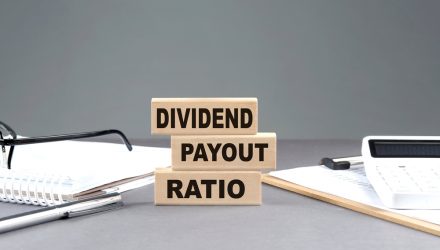A stock’s payout ratio is the percentage of earnings paid out in the form of dividends. Conventional wisdom often dictates that high payout ratios can be a cause for concern because if a company’s earnings take an unexpected turn for the worse, the divided could be in danger.
Indeed, there were a spate of dividend cuts by S&P 500 member firms in early 2020 during the first days of the coronavirus pandemic, and some of those offenders were high payout ratio names. However, dividend growth is rebounding in epic fashion, and payout reductions are scant compared to increases.
Additionally, high payout ratio names are delivering impressive performances. That’s good news for select exchange traded funds, including the Invesco S&P 500 High Dividend Low Volatility ETF (SPHD). SPHD isn’t dedicated to high payout ratio stocks. Rather, it focuses on high-dividend names with favorable volatility traits, but as a result, some of the ETF’s holdings are high payout ratio fare.
“Companies that are returning more of their excess capital to shareholders in the form of dividends have historically seen—and are continuing to see—incredibly strong performance,” said Patrick Pelfrey, co-head of quantitative research at Credit Suisse, in an interview with Barron’s. “This is in contrast to buybacks, which are often viewed by market participants as a driver of share prices.”
SPHD is proof of the point that high payout ratio names are outperforming. The Invesco ETF is up 6.05% year-to-date while the S&P 500 is down 12.57%. SPHD is doing that with the benefit of a 3.52% dividend yield, putting the ETF well ahead of the S&P 500 and 10-year Treasuries on the basis of yield. As Credit Suisse notes, high payout ratio names are enjoying return advantages over big share repurchasers.
“Since Covid emerged, meanwhile, things reversed for these two groups of stocks. The lower-ranked dividend payout stocks have returned 9.5%, compared with 6.2% for the top-ranked buyback companies over that period. The former group outperformed over that 20-year stretch, 9.3%% to 8.1% annualized,” reported Lawrence Strauss for Barron’s.
The Barron’s piece featured a list of high payout ratio stocks comprised of 3M (NYSE:MMM), Baker Hughes (NYSE:BKR), Duke Energy (NYSE:DUK), Huntington Bancshares (NASDAQ:HBAN), International Business Machines (NYSE:IBM), McDonald’s (NYSE:MCD), and Medtronic (NYSE:MDT).
IBM is SPHD’s lone technology holding, commanding a weight of 2.59% in the fund, while Duke and 3M combine for about 3.4%. Duke is the highest payout ratio stock in that trio at 77.4%.
For more news, information, and strategy, visit the ETF Education Channel.
The opinions and forecasts expressed herein are solely those of Tom Lydon, and may not actually come to pass. Information on this site should not be used or construed as an offer to sell, a solicitation of an offer to buy, or a recommendation for any product.








